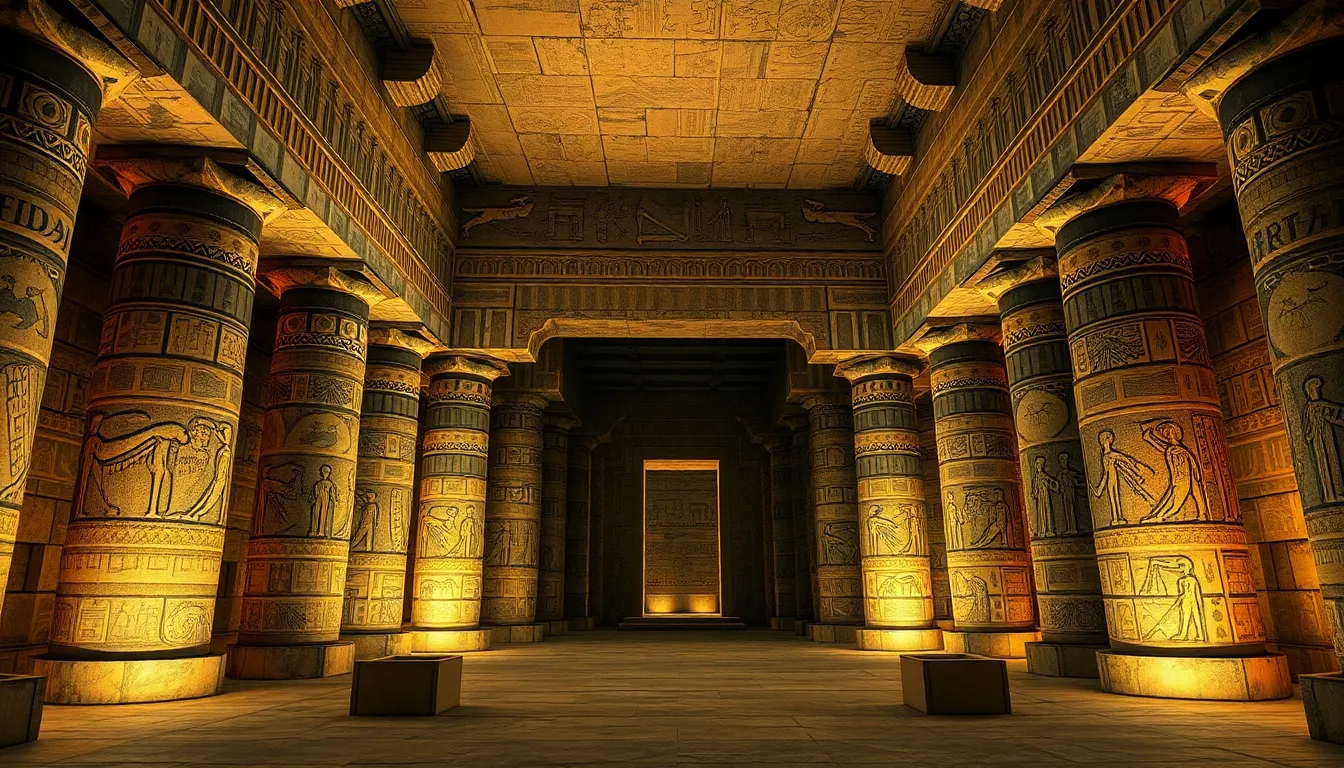From Rituals to Festivals: Life Inside Ancient Egyptian Temples
I. Introduction
The temples of Ancient Egypt were more than mere structures; they were the heart of religious and cultural life. These sacred spaces served as a bridge between the divine and the mortal, where the gods were worshipped, and the people sought favor and guidance. The significance of temples in Ancient Egyptian society cannot be overstated, as they were central to the community’s spirituality, education, and social order.
This article aims to explore the daily life, rituals, and festivals that took place within these magnificent temples, shedding light on their role in shaping ancient Egyptian civilization.
II. The Architectural Marvels of Ancient Egyptian Temples
Ancient Egyptian temples are renowned for their grandeur and intricate design. Typically, a temple consisted of several key components:
- Forecourt: An open area where worshippers gathered.
- Pylons: Monumental gateways that marked the entrance to the temple.
- Hypostyle Hall: A vast hall supported by columns, often adorned with elaborate carvings.
- Sacred Shrine: The innermost chamber where the deity’s statue was housed.
Each element of the temple was imbued with symbolic meaning, reflecting the relationship between the gods and the pharaohs. For instance, the alignment of temples with celestial bodies often represented the connection between earth and sky.
Some notable examples of these architectural marvels include:
- Karnak Temple: One of the largest temple complexes in the world, dedicated to the Theban triad of Amun, Mut, and Khonsu.
- Luxor Temple: A stunning example of temple architecture, celebrated for its beautifully preserved reliefs and colossal statues.
III. The Role of Priests in Temple Life
The priesthood was a vital component of temple life, with a well-defined hierarchy that ensured the smooth operation of rituals and offerings. The hierarchy typically included:
- High Priest: The chief religious leader responsible for overseeing temple activities.
- Secondary Priests: Assistants who performed specific rituals and maintained the temple.
- Novices: Young trainees learning the ways of the priesthood.
Daily routines for priests were rigorous and focused on maintaining the temple’s sanctity. Their duties included:
- Performing morning rituals to awaken the deity.
- Cleaning and maintaining the temple grounds.
- Offering food and incense to the gods.
- Leading prayers and chants throughout the day.
IV. Rituals: Daily Worship and Offerings
Daily rituals were an integral part of temple life, designed to honor the gods and ensure their favor. Each day, priests would perform a series of rituals that included:
- Morning Rites: The awakening of the god, involving the opening of the temple doors.
- Offering Rituals: Presenting food, drink, and incense to the deity, which were believed to sustain them.
- Communal Prayers: Engaging the community in worship, reinforcing their connection to the divine.
The significance of these offerings extended beyond mere ritual; they were a means of maintaining cosmic order and ensuring prosperity for the community. In essence, the act of offering was a reciprocal relationship between the gods and the people.
V. Festivals: Celebrations of the Divine
Festivals played a crucial role in temple life, providing opportunities for communal celebration and religious expression. Major festivals included:
- The Opet Festival: Celebrated the fertility of the Nile and the connection between the pharaoh and the gods.
- The Wepet-Renpet Festival: Marked the beginning of the new year and involved various rituals to ensure a bountiful harvest.
- The Festival of the Valley: Honored the deceased and celebrated the connection between the living and the dead.
During these festivals, temples transformed into vibrant centers of activity filled with music, dance, and communal participation. People from all walks of life gathered to partake in the celebrations, reinforcing community bonds and collective identity.
VI. The Community’s Engagement with Temples
The relationship between temples and the local population was symbiotic. Temples served not only as religious centers but also as places of social gathering and support. Rituals and festivals fostered community bonds in several ways:
- Social Cohesion: Festivals brought people together, reinforcing social ties and shared identity.
- Economic Support: Temples often provided food and resources to the needy during festivals.
- Conflict Resolution: Temples acted as neutral grounds for settling disputes and mediating conflicts.
VII. Temples as Centers of Knowledge and Culture
Beyond their religious significance, temples were also centers of knowledge and culture. They played a pivotal role in:
- Education: Temples often housed schools where scribes and priests were trained in writing, mathematics, and religious texts.
- Preservation of Knowledge: Temples served as repositories for important texts and records, safeguarding ancient wisdom.
- Artistic Contributions: The artistic and architectural achievements stemming from temple life have left a lasting legacy in ancient Egyptian culture.
VIII. Conclusion
The enduring legacy of ancient Egyptian temples is a testament to their significance in shaping the culture and spirituality of the civilization. The rituals and festivals that thrived within these sacred spaces not only provided a means of worship but also fostered community, education, and artistic expression. Understanding the life inside ancient Egyptian temples allows us to appreciate the complexity and richness of their culture, which continues to influence our modern understanding of spirituality and community.




